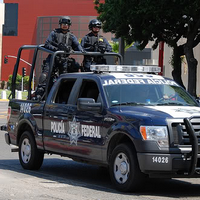This is the second of a two-part series examining diversification efforts by Latin American drug-trafficking networks. Part I examined the FARC's illegal gold-mining operations in Colombia. Part II examines Mexican drug traffickers' use of oil-tapping to generate revenues.
Mexico's crime syndicates are well-known as exporters of heroin, marijuana and methamphetamines, importers of firearms, and perpetrators of violence. Their business has produced bloody internecine turf wars, with rival gangs battling it out for control over distribution routes mainly within the drug-producing states of northern Mexico. But over the past five years the drug trade has been squeezed between the pincers of Mexican President Felipe Calderón's avowed "war on drugs" on one side and shifts in the global economy on the other.
As the government crackdown gathered steam beginning in 2007, many of the routes used by the gangs for moving drugs into the United States were pushed onto the territory used for Mexico's other infamous illicit trafficking endeavor, human smuggling. So-called coyotes, who had charged $5,000 to $10,000 a head to smuggle migrants in search of work across the desert into the U.S., increasingly found their desolate treks being held up by gangsters seeking a payoff. The aim of the encroachment is extortion, especially of migrants who already have relatives in the U.S.

